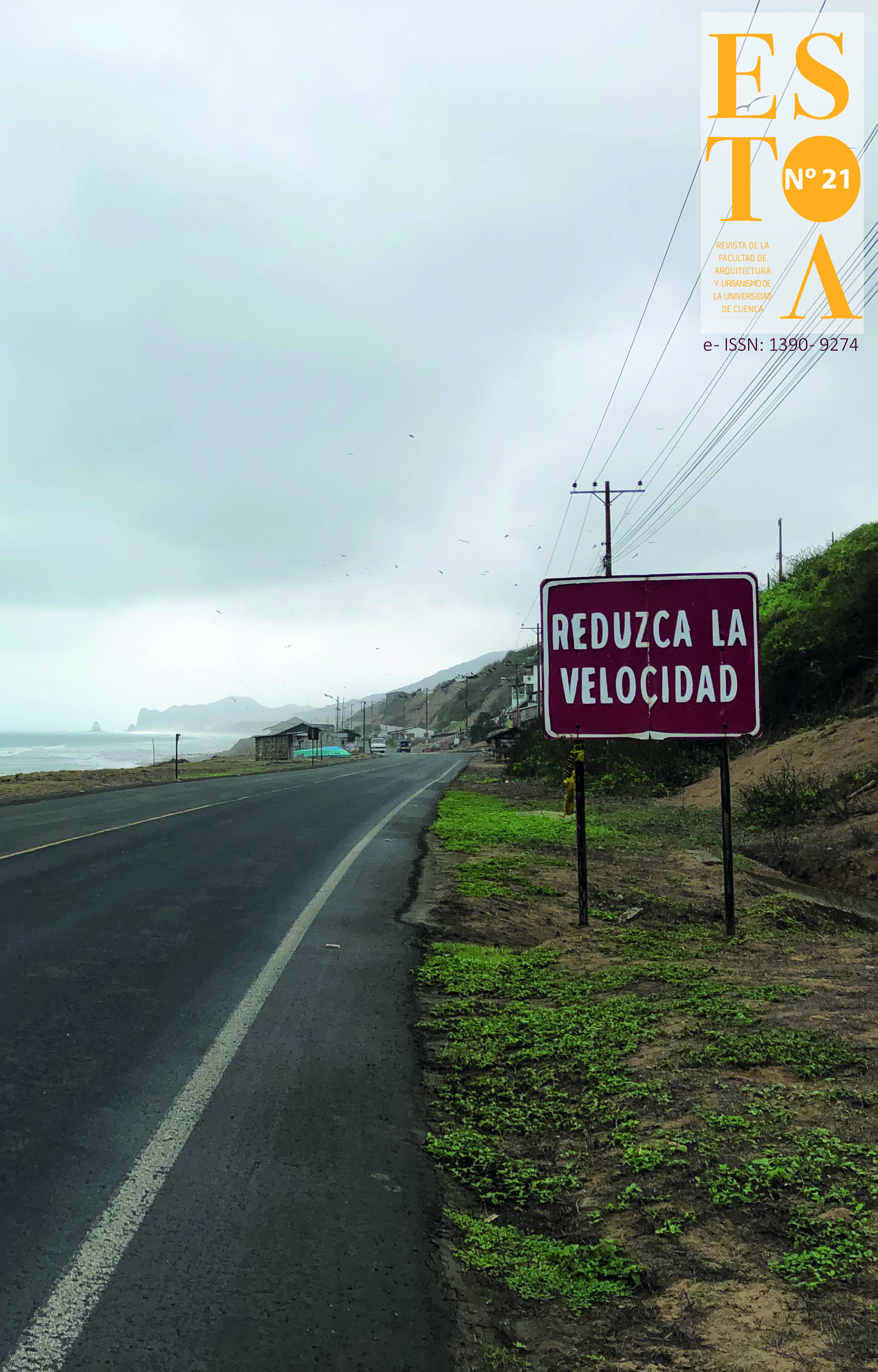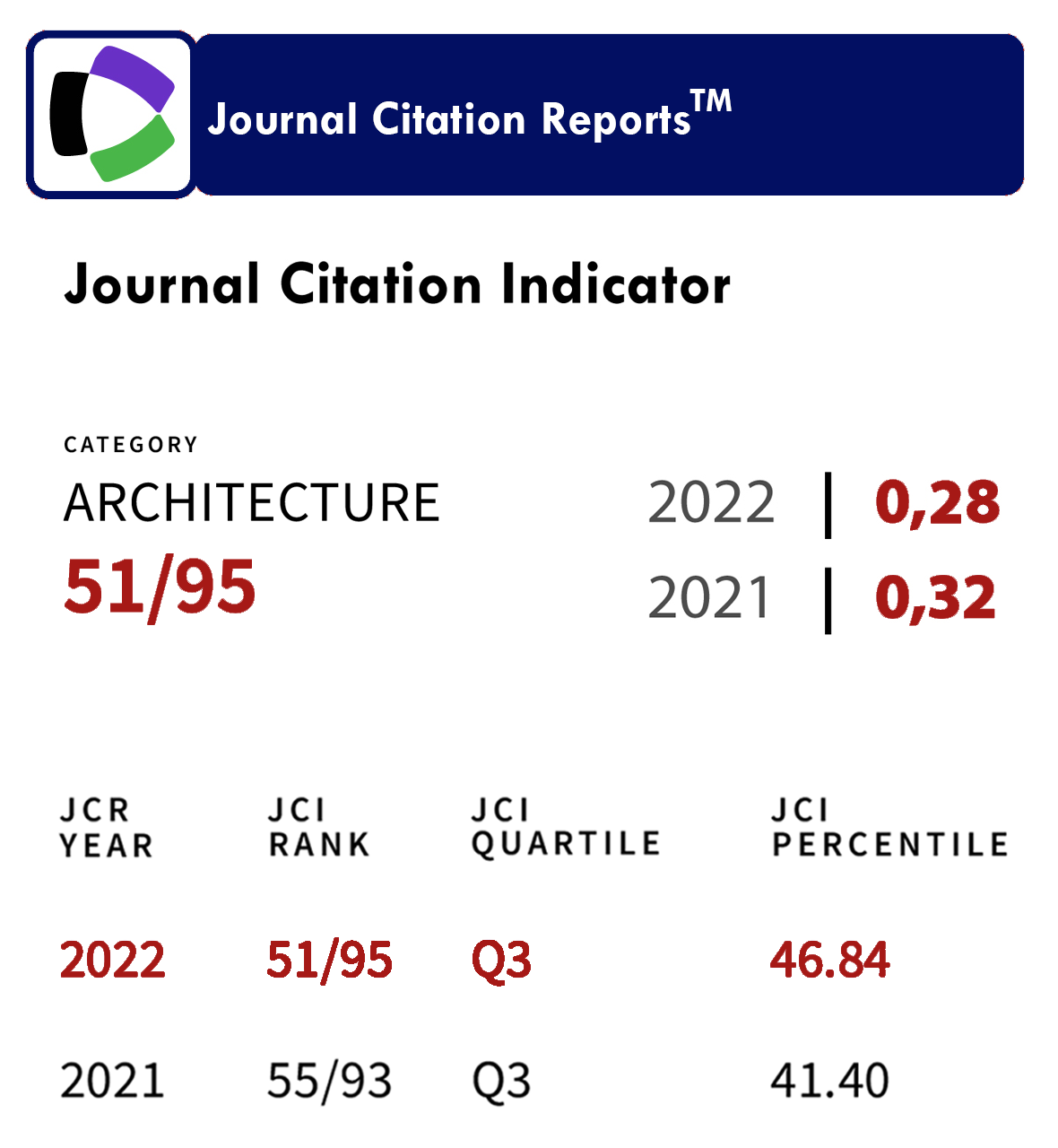Incidence of forestry solar permeability on the thermal behavior of urbanizations adapted to hillside areas
DOI:
https://doi.org/10.18537/est.v011.n021.a01Keywords:
Tree alignment adapted, hillside, sustainable environment, microclimate urban, ENVI-metAbstract
Although afforestation is an essential component to improve environmental quality and urban thermal habitability, there is a few quantitative information on the impact of the selection of species in combination with morphological and climatic characteristics of the site. This work approach the incidence of two species of tree alignment on the thermal behavior of two adapted urban schemes: linear organic grid and organic grid with Cul-de-Sac. The forestry species -White mulberry and China berry tree- present similar characteristics and differ in their solar permeability (14.53% and 19.79%). Using the ENVI-met software, the different cases were simulated by adjusting the theoretical model to a real monitored case. The results show differences in the maximum temperatures greater than 4°C between the species studied in the linear organic grid and not very significant differences in the organic Cul-de-Sac grid. This research will collaborate in the selection and design of proposals for a sustainable urban development in the hillsides of Mendoza, Argentina.
Downloads
References
Abraham E. (1990). Proyecto: Planificación y Ordenamiento Ambiental del Piedemonte al Oeste de la Ciudad de Mendoza. IADIZA. Gobierno de Mendoza. 213.
Abraham, M. E., Roig, F. A. & Salomon, M. (2005). Planificación y gestión del piedemonte al oeste de la Ciudad de Mendoza. Un asunto pendiente. Libro: Conflictos socio- ambientales y políticas públicas en la provincia de Mendoza. OIKOS-Red Ambiental, 267-295.
Bochaca, F. (2005). El verde en la estructura urbana de Mendoza. ARQ (Santiago) [online]. 2005, n.60, pp.68-71. ISSN 0717-6996. http://dx.doi.org/10.4067/S0717-69962005006000013.
Bórmida, E. (2014). Mendoza, una Ciudad oasis. Revista de la Universidad de Mendoza.
Bruse, M. (1999). The influences of local environmental design on microclimate. University of Bochum.
Cantón, M. A., Cortegoso, J. L. y De Rosa, C. (2000). Environmental and energy impact of the urban forest in arid zone cities. Architectural Science Review, 44,1, 3- 16. Department of Architectural and Design Science. University of Sydney. Sydney, Australia
Cantón, M. A., Cortegoso, J. L. y De Rosa, C. (2003). Assessing the solar resource in forested urban environments: results from the use of a photographic- computational method. Architectural Science Review, 46, 2, 115-123.
Castillo, A. L., Correa, E. N. & Cantón, M. A. (2017) Regulación urbanística de piedemonte en ciudades latinoamericanas. Análisis crítico de la normativa internacional y el marco regulatorio de la Ciudad de Mendoza, Argentina. ACE: Architecture, City and Environment-Arquitectura, Ciudad y Entorno. 12 (35), 39-70. 10.5821/ace.12.35.4761
Castillo, A., Correa, E., & Cantón, M. (2019). Geomorfología y forma urbana. Comportamiento térmico de distintas tramas en áreas de piedemonte: el caso de Mendoza, Argentina. Revista EURE - Revista De Estudios Urbano Regionales, 45(136). http://dx.doi.org/10.4067/S0250-71612019000300183.
Corra, E., Ruíz, A., Cantón, A. y Lesino, G. (2012). Thermal comfort in forested urban canyons of low building density. An assessment for the city of Mendoza, Argentina. Building and Environment, 58, 219-230. https://doi.org/10.1016/j.buildenv.2012.06.007.
Correa, E. (2006). Isla de Calor Urbana. El caso del aérea metropolitana de Mendoza. Salta: Universidad Nacional de Salta.
Correa, E., Pattini, A., Córica, M. L., Fornés, M., & Lesino, G. (2006). Software: Pixel de Cielo. Programa informático que calcula el factor de visión de cielo en un punto determinado de un área de estudio, a partir del procesamiento de una imagen digital hemisférica tomada con una lente ojo de pez. Número de registro CONICET: 07304.
Granero-Belinchon, C., Adeline, J., Lemonsu, A. y Briottet, X. (2020). Phenological Dynamics Characterization of Alignment Trees with Sentinel-2 Imagery: A Vegetation Indices Time Series Reconstruction Methodology Adapted to Urban Areas. Remote Sens. 12, (4): 639. https://doi.org/10.3390/rs12040639
Kleerekoper, L., Van Esch, M., & Salcedo, T. (2010). How to make a city climate-proof, addressing the urban heat island effect. Resources, Conservation and Recycling, 30-38. 10.1016/j.resconrec.2011.06.004
Lin, T., Matzarakis, A. & Hwang, R. (2010). Shading effect on long-term outdoor thermal comfort. Building and Environment, 45, 213-221
López Rodríguez, M. (2008). Riesgo en el piedemonte del Gran Mendoza por avance urbano. Tiempo y Espacio, Universidad del Bío-Bío, año 18 Vol. 21/2008, Pág. 47- 57. ISSN 0716-9671
Martínez, C., Cantón, M. A. y Roig, F. (2014). Incidencia del déficit hídrico en el crecimiento de árboles de uso urbano en ciudades de zonas áridas. Caso de Mendoza, Argentina. Interciencia: Revista de ciencia y tecnología de América. 39 (12), 890-897. https://dialnet.unirioja.es/servlet/articulo?codigo=5512715
Martínez, C., Ruíz, A. y Atencio, L. (2017). Proyecto Integral de forestación y reforestación urbana para Mendoza. Sustentabilidad ambiental del boque urbano para ciudades de zonas áridas de Argentina. UNICIPIO. Provincia de Mendoza.
Oke, T. (2004). Initial guidance to obtain representative meteorological observations at urban sites. Geneva: IOM Report No. 81, World Meteorological Organization.
Oliver-Pujol, M., & Bisbal-Grandal, I. (2019). Diversidad en la dispersión: Morfología de las áreas residenciales en el periurbano del Gran Mendoza/Diversity in urban sprawl: Morphology of residential areas in peri-urban Greater Mendoza. Urbano, 22(40), 46 - 63. https://doi.org/10.22320/07183607.2019.22.40.03
Ruiz, M. A., Correa, E. N., & Cantón, M. A. (2015). Incidencia de la selección de la especie forestal en el confort térmico de cañones urbanos de zonas áridas: El caso de Mendoza, Argentina. Urbano, 18(32), 60-70. http://revistas.ubiobio.cl/index.php/RU/article/view/2155
Ruíz, M. A., Sosa, M. B., Correa, E. N. y Cantón, M. A. (2017). Design tool to improve daytime thermal comfort and nighttime cooling of urban canyons. Landscape and Urban Planning, 167, 249-256. https://doi.org/10.1016/j.landurbplan.2017.07.002.
Santamouris, M., Papanikolaou, N., Livada, I., Koronakis, I, Georgakis, C., Argiriou, A. y Assimakopoulos, D.N. (2001). On the impact of urban climate on the energy consumption of buildings. Solar Energy, 70,3. 201-2016. https://doi.org/10.1016/S0038-092X(00)00095-5.
Schmidt, M. (2015). The contribution of rainwater harvesting against global warming. London, UK: Technische Universität Berlin, IWA Publishing.
Stocco, S. (2016). Impacto de la morfología y materialidad de las plazas en la calidad energético-ambiental de ciudades emplazadas en zonas áridas. Mendoza. Universidad Tecnológica Nacional.
UNICIPIO. (2018). Sistema integrado de información y gestión para la refuncionalización y recuperación del arbolado urbano. Área Metropolitana de Mendoza. Ministerio del Interior, Obras Públicas y Vivienda. Presidencia de la Nación Argentina. Recuperado en: https://www.mendoza.gov.ar/unicipio/wp-content/uploads/sites/32/2018/08/PROYECTO-ARBOLADO-FINAL.pdf
Wheeler S.M., Abunnasr Y., Dialesandro J., Assaf E., Agopian S. y Gamberini VC. (2019). Mitigating Urban Heating in Dryland Cities: A Literature Review. Journal of Planning Literature. 34(4):434-446. doi:10.1177/0885412219855779
Published
How to Cite
Issue
Section
License
Copyright (c) 2022 Estoa. Revista de la Facultad de Arquitectura y Urbanismo

This work is licensed under a Creative Commons Attribution-NonCommercial-ShareAlike 4.0 International License.
The Journal declines any responsibility for possible conflicts derived from the authorship of the works that are published in it.
The University of Cuenca in Ecuador conserves the patrimonial rights (copyright) of the published works and will favor the reuse of the same ones, these can be: copy, use, diffuse, transmit and expose publicly.
Unless otherwise indicated, all contents of the electronic edition are distributed under a Creative Commons Attribution-NonCommercial-ShareAlike 4.0 International License.






